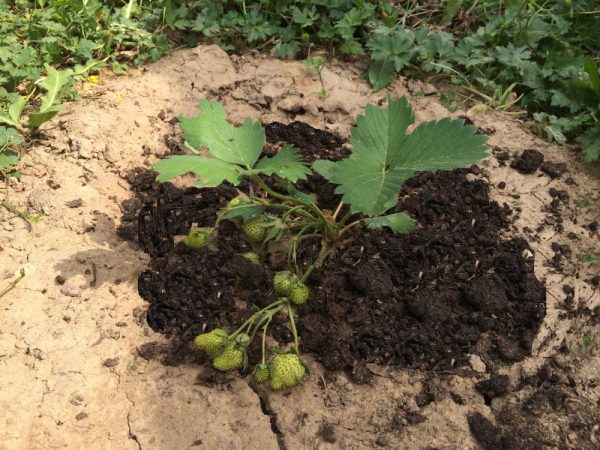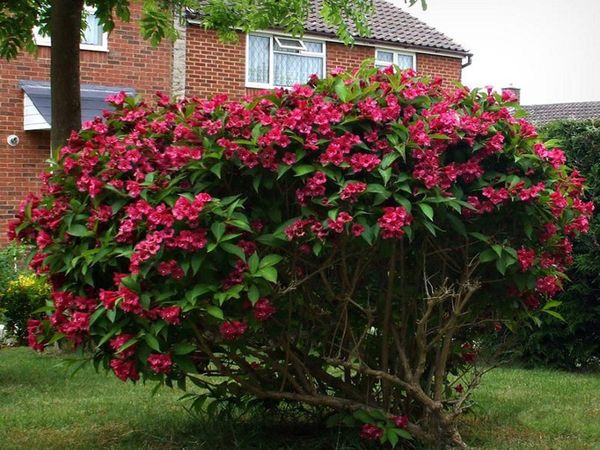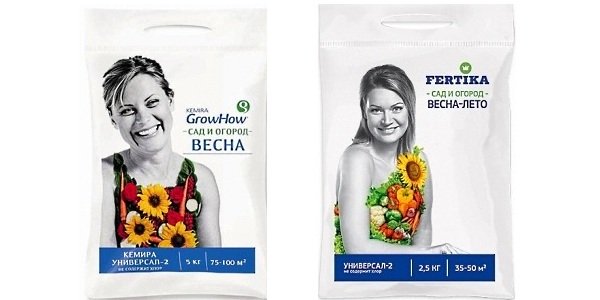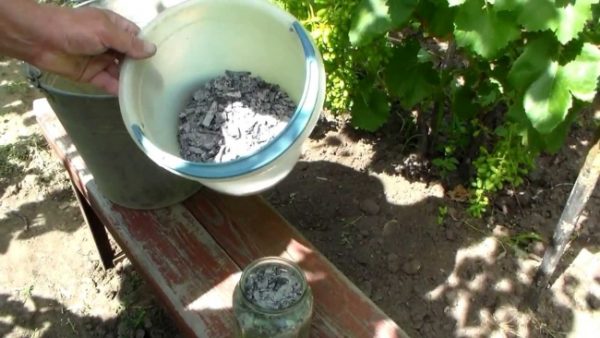How to feed shrubs: instructions and description of fertilizer
Content
How is the first feeding carried out
Every year, all garden trees and shrubs should receive at least 2 additional fertilizing. The first is carried out in the spring, when the plants are just beginning to grow intensively, they need strength to build up the green mass, to prepare for the laying of flowers (and therefore fruits). Therefore, in the spring, it is imperative to apply nitrogen fertilizers. All trees and shrubs need many micro- and macroelements for development, including manganese, boron, sulfur, calcium, and many others. But the most important are nitrogen, potassium, phosphorus. It is they who provide growth, metabolic processes, all the functions of the plant organism, it is they who are pulled out of the soil in large quantities by the plants.
After the harvest ripens (August-September), the overwhelming majority of fruit crops usually have a period of secondary root growth. Then they need feeding with phosphorus, calcium, potassium, the supply of which will help them to survive the winter easier. But in the spring, it is advisable to apply mineral and organic fertilizers, mainly containing nitrogen. Its deficiency will make itself felt by the loss of a bright green color, because the amount of chlorophyll will decrease, the function of photosynthesis will be disrupted, the result will be a poor harvest and an increasingly weakening plant, susceptible to most diseases. If the trees and shrubs were well fed and watered in the fall, then the first spring feeding is carried out in May.
For young bushes
For planting fruit shrubs, like trees, they usually prepare in advance: fertilize the proposed planting site, dig a hole, lay mineral and organic fertilizers that will feed the plant for several years, mix them with the soil so as not to burn the roots. This will satisfy the need for basic elements for the coming years until the plant bears fruit. Spring feeding with nitrogen-containing fertilizers with a small amount of potassium will be enough for him. In fruit bushes, most often these are currants, raspberries, gooseberries, grapes, the bulk of the roots are shallow, root dressing can be combined with watering using liquid fertilizers. Grapes accept foliar feeding well - they simply spray it with a solution with a small fertilizer content - no more than 5%. But if the soil for him was well prepared before planting, then for the first 3 years, liquid dressings in the spring and in the first half of summer are enough for him.
Dry substances must be embedded in the soil to a shallow depth - nitrogen can escape if it is not bound to wet soil. The same applies to fruit trees, only taking into account the depth of the roots, the necessary mixtures are usually introduced into the near-trunk circle a little deeper. But it is not worth deepening much: nitrogen will easily move to the roots with water after watering or rain. Raspberries for the first 3 years of life require only nitrogen fertilizers in the spring. After the snow melts, up to 100 g of nitrogen fertilizers are applied per 1 sq. m landings.
Ornamental plants do not need intensive nutrition, but if the soil is depleted, then the bushes and trees also need feeding. It is applied in the spring, when the plants have already begun their enhanced growth. Flowering crops such as roses need fertilization prior to planting to ensure vigorous, long-lasting flowering.
Video "Shrub Fertilizer Council"
An informative video where an expert gives tips and advice on plant nutrition.
For adult shrubs
Adult fruiting shrubs will need more nutrients and are fed several times. For the first time in the spring, a complex mineral fertilizer with a high nitrogen content is applied, when the leaves begin to bloom. Gooseberries are fed until the flowers appear once every 2 years, if the soil is not too depleted. Currants love to receive top dressing every spring from urea, calcium and ammonium nitrate. If the bushes were not fertilized in the fall, then in the spring you can add slurry. All this can be shallowly embedded in the holes under the bushes, then watered abundantly. Currants respond well to spraying the bush with diluted mineral fertilizers with nitrogen and potassium, this is done in the spring before the flowers appear.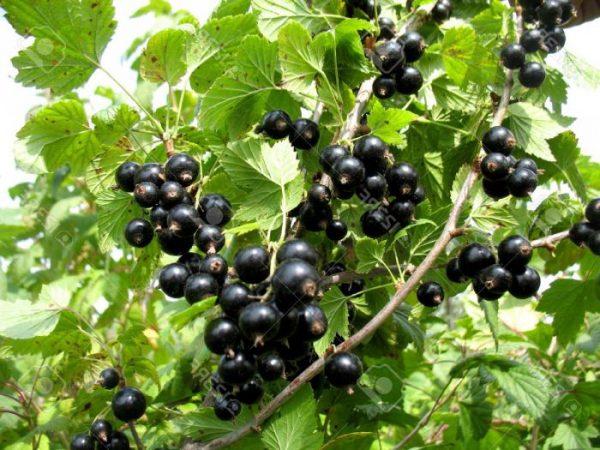
Raspberries grow well on light sandy or loamy soils, fertilizers need to be applied to the ground after loosening. Urea, ammonium nitrate can be added in May before the flowers appear, and mulched with sawdust on top. This mulch will protect raspberries from weeds, prevent moisture and volatile nitrogen compounds from evaporating quickly, and over time will turn into an excellent natural top dressing itself. Sawdust mulching may well change the structure of the soil, make it lighter, more breathable, and provide the shrub with slow, constantly flowing fertilizer. Adult plants, in addition to nitrogen, also need potassium salt, superphosphate and organic matter.
Grapes are fed with organic fertilizers once every 3 years. If manure was introduced in the fall, then it is better not to apply mineral fertilizers in the spring. When organic matter was not used in the fall, then in the spring it is worth fertilizing before opening the bush. Later, feeding is repeated before the appearance of flowers and after flowering. Rose bushes also need to be fertilized in spring if you want to admire the lush flowers. Special mixtures of long-term exposure have been developed, which are applied in the spring 1 time, then potash or organic substances can be added in the fall.
Which fertilizer to choose
Fruit trees and shrubs should receive both organic and mineral fertilizers. The main organic fertilizer can be manure or bird droppings. The mullein infusion is diluted 1: 6, poured into 1 bucket per 1 sq. m. Bird droppings should be handled even more carefully so as not to burn the plants. It is diluted 1:15, per 1 sq. m pour half the bucket. Chickens are often kept in backyards and summer cottages, their droppings are collected, providing the garden (or vegetable garden) with very high-quality fertilizer.
But horse manure and mullein are not very easy to get, such a substance is very expensive. Specialty stores offer organic blends in concentrates that can be used on trees, fruit shrubs, or perennial flowers. To make the soil suitable for growing fruit crops, it is fertilized with mineral mixtures, which must necessarily contain phosphorus, nitrogen, potassium, calcium, and other micro- and macroelements. All crops have different needs, in order to determine what and how much to add, they take into account the condition and structure of the soil, the age of the plant, the season, whether we irrigate the garden. As a rule, in the spring, all plants require nitrogen, it is introduced together with potassium. You can use ammonium, potassium nitrate. Potash-phosphorus and organic fertilizers are used only if they were not applied in the fall.
An irrigated orchard with mature fruit crops requires more nitrogen because it is washed out by water during irrigation. The first top dressing may include 10 g of ammonium nitrate per 1 sq. m. The second feeding is carried out after 20 days, for fruit-bearing trees and bushes use nitrophoska or nitroammofoska (20-25 g), add chloride or potassium sulfate (10 g - per 1 sq. m), which depends on the ratio of the plant to chlorine.
In the spring, under each bush of currants, flowers, you need to add up to 50 g of urea, and after 4 years of life, the top dressing is reduced to 30 g, applied in 2 times. The first time - in early spring, the second - after flowering. In summer, organic and potash fertilizers are demolished to affect the quality of the crop. Coniferous ornamental shrubs require other feeding, complex mineral fertilizers will not benefit them, for example, azofoska can harm them. They need magnesium more than nitrogen. Nitrogen will cause the accelerated growth of young shoots, which will not have time to grow stronger before autumn, they may not survive the harsh winter, and then destroy the entire plant. For coniferous bushes, there are specially selected mixtures that can be selected in specialized stores.
Video "Instructions for feeding bushes"
Video instruction on how to feed shrubs in the spring season.

